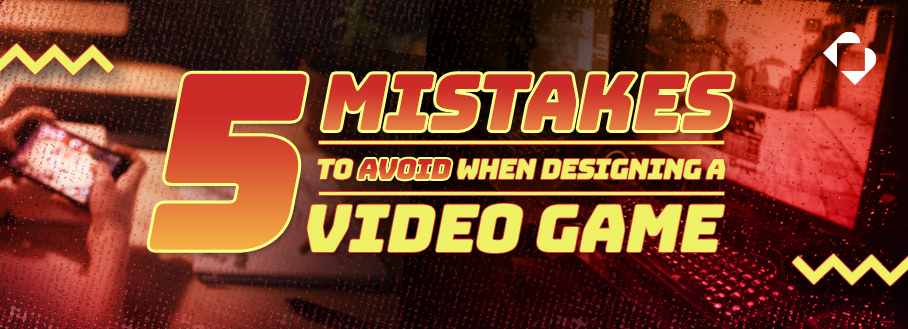
There are millions of video games out there and when you finally come up with a unique idea for a 2D game, you don’t want to waste any time getting it made. Who knows, someone may have the very same idea, and you certainly don’t want your game to be tagged as a copycat! But, do you really know the ins and outs of beginner game development?
If you’re reading this article, we’re guessing that you don’t — and that’s perfectly alright! We want to give you the best information that’ll help you avoid five common mistakes people make when venturing into beginner game development.
So, without further ado, let’s get the show on the road!
Mistake #1: Not Having a Target Audience
When we think of 2D video games that have a massive audience and are well-loved, classic 2D games, we think of classic games like Super Mario from the NES and SNES era. We also can’t forget Mega Man, Sonic the Hedgehog and or Braid! These games have a huge audience because the publishers of these games have the resources to do the necessary research and can create a marketing plan to reach said audience.
Since you’re new to mobile game development, you’re probably not going to have the resources to pour into researching who your target audience should be and the best marketing strategy to reach that audience. You can’t ignore this step in game development because if you don’t know who will be interested in your game! When figuring out who your target audience should be, these are just some of the questions you should be asking yourself (or within a poll on social media):
- What audience group will most likely say your game is enjoyable and they’d play again?
- What kind of games does your audience play (puzzle games, platformers, RPG, etc)?
- What features does your audience look for when playing a game?
Mistake #2: Not Knowing Your Competitors
You may think your game idea is totally new and innovative, but there’ve been hundreds of games that’ve been released since gaming began back in 1958 when physicist William Higinbotham was credited with creating the first video game!
Understanding your target audience is so important because it’ll give you insight as to what themes, game mechanics, and features they enjoy. Once you understand your audience, you need to look at games that match those criteria, a.k.a. your competition. You need to identify the competition’s strengths, weaknesses, what makes their games so enjoyable and how you can surpass their success. From there, you can develop a game that improves on those strengths, increases the enjoyment while playing, and doesn’t fall victim to the same weaknesses.
Mistake #3: Trying to Create a Large Game
Do you know why smaller video games can be lots of fun? Small games are great ways to kill some time and won’t take too long to beat (or move to the next level). It’s not uncommon for new game developers to have huge plans for their games and want to make loads of content. Not every game can be like The Witcher 3 with 50 hours of gaming just to complete the main story!
We recommend starting small, even if you have a bigger picture in mind. Don’t be afraid to scale back and trim off some of the fat. Ask yourself if you really need mini-games or if your levels can be simplified but still be challenging.
Once your game becomes a huge success, then you can add more content via patches, updates, or downloadable content.
Mistake #4: Levels Don’t Progress Well
The ideal video game will progress in difficulty. You don’t want a game that is too easy because players will get bored and stop playing. Likewise, you don’t want a game to be too difficult because instead of getting bored, they’ll get frustrated and — you guessed it — will stop playing.
The key to having a successful game is to have the levels of your game progress at a steady pace. Include a tutorial at the start of the game or give the player tips on how to play that particular level. For example, the popular game Candy Crush gives you a popup at the start of a level and tells you how to get certain boosters, like the “Lollipop Hammer,” that’ll destroy a chosen candy.
Once the player understands the game mechanics, then you can make the levels progressively more difficult — regardless of the type of game you’re creating.
Mistake #5: Releasing the Game too Early
After all of the hard work you’ve poured into your game, from researching your audience, fleshing out your idea, to comparing your ideas to that of your competitors and improving on them, you won’t want to release your game too quickly. Cyberpunk 2077 is a perfect example of a rushed release. The game was released although it was riddled with bugs, low frame rates and horrible graphics on consoles. In short — Cyberpunk 2077 sucked.
You can avoid a bad release by taking the time to play the game from start to finish. You can even have your friends play it and ask for their opinions about the levels, the mechanics, how fun it is, and if there are any issues that need to be addressed. It is only after you do these test runs and address any issues that you should release the game, because you do not want to have a release like Cyberpunk 2077!
Finding Success with Beginner Game Development
From the moment the idea enters your mind, creating a game is going to take hard work, creativity, and patience. However, when you do take your time and take the steps to avoid these beginner game development mistakes, you can take your game to the next level (no pun intended). Download Buildbox today!



